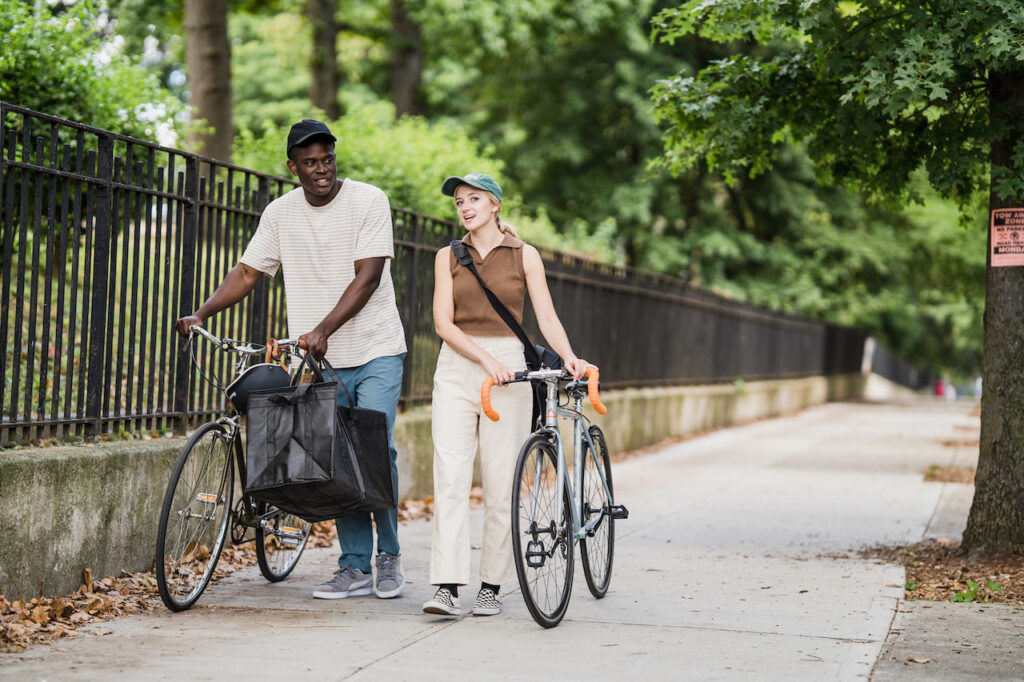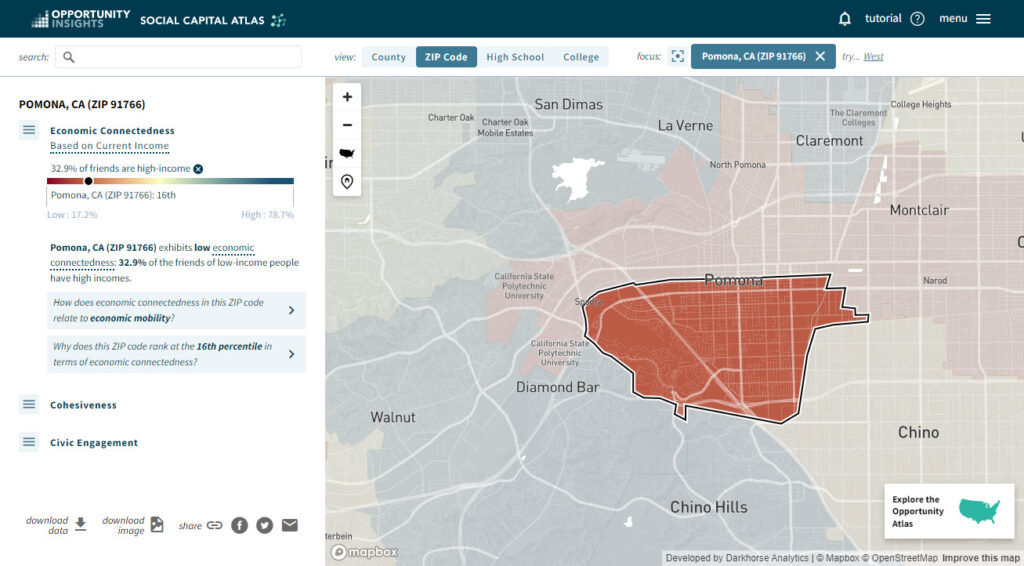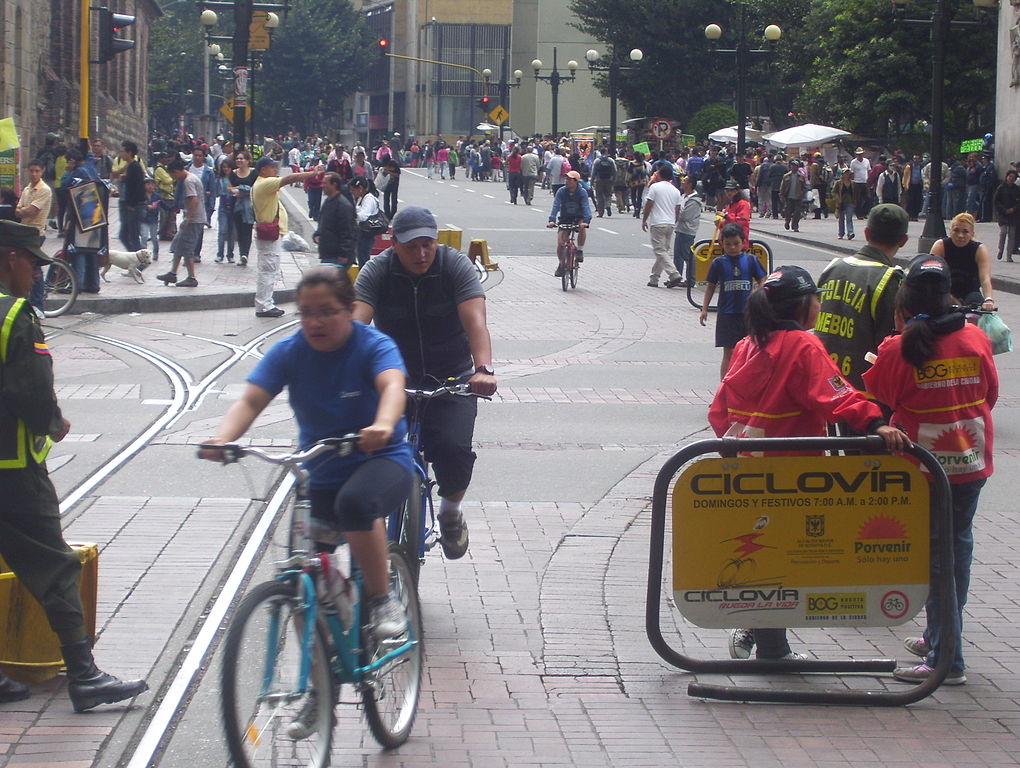How can cultivating friendships in your community help you thrive?
Maria Vargas | May 30, 2023

Do friendships help you thrive? What does it even mean to thrive? According to Merriam-Webster Dictionary, to thrive could mean, 1) is to grow vigorously: Flourish, 2) to gain in wealth or possessions: prosper. Regardless of which of these meaning you choose, research demonstrates that healthy, strong friendships help you thrive. Cross-social friendships help lower-income individuals thrive financially, but friendships also help one flourish holistically, considering one’s physical, mental, and social well-being. It’s so beneficial to your well-being that the Institute of Medicine and National Research Council states friendships can be more health-promoting than regular exercise.
Thriving in Terms of Financial Prosperity
If we measure thriving in terms of gains in wealth or possessions, that is financial prosperity, there is recent evidence that friendships with more affluent individuals can be beneficial. A recent study in Nature examined the social networks of 70.3 million Facebook users between the ages of 25-44 years used to construct the Social Capital Atlas, a report measuring the exposure and friending bias for each high school, college, and ZIP code in the United States. This is a valuable tool to understand how well a community scores in cross-socioeconomic friendships, and its relation to the upward mobility of individuals with low-socioeconomic status. The study from Nature found that the upward mobility of individuals of lower socioeconomic status is positively affected by connections to individuals of higher socioeconomic status. This concept of cross-socioeconomic friendships is referred to by scholars as economic connectedness.

Financial prosperity is certainly one measure of thriving. Economic wealth offers a means for providing basic necessities for you and your family, as well as possessions and experiences that support good health and perhaps lead to happiness. However, researchers at the University of Pennsylvania and Princeton University have found that there is a limit to the happiness that money can buy, at least for some people. For those characterized as the least happy, happiness rises with increases in their income, until they earn $100,000 annually, when it ceases to increase, even as income continues to grow. For others, who were characterized as already having greater happiness, increases in income were shown to have a persistent positive effect, even accelerating happiness among those who were the most happy. This suggests that while earning enough to be secure in providing basic necessities has a positive effect for most, if not all, people, excess wealth and possessions may not always contribute to happiness, or the sense of thriving in other uses of the term.
Thriving in terms of Ameliorating Holistic Health
If we return to the first part of the definition of ‘thrive,’ we are reminded that it is “to grow vigorously: flourish.” This is a much broader definition, and here we can expand on all types of friendships, not just cross-socioeconomic friendships.
In his book Cities for Life: How communities can recover from trauma and rebuild for health, Jason Corburn states, “while those with wealth and privilege living in cities tend to live longer than those experiencing structural violence, their quality of life has diminished” (P. 10). The Guardian notes that, “The British got richer by more than 40% between 1993 and 2012, but the rate of psychiatric disorders and neuroses grew.” These findings indicate that a financial boom does not necessarily correlate to a boom in well-being. Just recently, during the COVID-19 Pandemic, we saw the staggering effects of social isolation caused by lockdown policies contributing to cities’ mental health crises. As reported in the Washington Post, we also saw that actively using social media or being online did not mitigate depression, anxiety, or suicide. We were reminded that humans are not meant to be solely alone; we are not islands, but we were created to be in a physical, in-person relationship with one another.
Corburn argues that “Being in meaningful, frequent relations with others is the key to healing, health, and happiness” (P. 11). When surrounding ourselves with healthy friendships, these relationships can encourage us to grow holistically, offer a supportive community, increase our sense of belonging, and be one of the sources of happiness in our lives. Therefore, maintaining healthy friendships can help us to flourish, or thrive holistically, not just in terms of financial prosperity. Corburn references the Institute of Medicine and National Research Council report From Neurons to Neighborhoods stating that social connections “can be more health-promoting than quitting smoking, changing your diet, and even regular exercise” (P. 11). So much so that by fostering strong social connections, he argues you can increase your lifespan by 50%.
This research shows that maintaining frequent healthy friendships within supportive conditions in our communities can ameliorate our holistic health, which the World Health Organization defined in 1948 “as a complete state of physical, mental, and social well-being, not merely the absence of disease or infirmity.”
As people who care about our communities, we have the potential to cultivate healthy friendships and economic connectedness that helps everyone thrive in terms of financial prosperity and holistic health. This requires us to consider what assets promote friendships and connectedness, and how the built environment might effectively be leveraged to fill gaps that may exist in these assets.
Assets that Help us Thrive
One educational thinktank, The Search Institute, has been focusing on how young people acquire assets that help them thrive academically, socially, and in terms of their healthy development. Their thriving indicators include exhibiting leadership, maintaining good health, valuing diversity, and succeeding in school. They have identified 40 internal and external assets that contributing to the healthy development of young people, as well as methods for assessing whether or not a person has accumulated these assets. The more assets the youth acquires, the greater the possibility for them to thrive. While the Search Institute’s work focuses on youth, this concept and framework has the potential to also be applied to the health and well-being of adults.
One study by the Search Institute discovered that the youth accumulated more assets from their connections to families than in other places. Scoring second, however, was the social group, which were the strengths experienced through friends and other relationships. Other groups followed, such as schools, the community, and personal traits were also an important factor. This research provides hope for youth who do not exhibit supportive family environments, as other factors can help young people thrive.
How the Community Can Cultivate Friendships
Cities can promote cross-social friendships to help not only low-income but also moderate- and high-income individuals thrive by prioritizing communal spaces that appeal to all. Resources such as libraries and community centers can offer writing centers, cafes, maker spaces, art classes and tool libraries. Mentorship programs can also build cross-class friendships while specifically helping the youth achieve their goals. Some examples include, Friends of the Children and Becoming a Man, both of which are shown to have been successful programs positively impacting the youth.
Centrally located parks near neighborhoods are also beneficial for people to gather and meet. However, sometimes, some communities have poor park accessibility and availability, making this ideal green gathering space inaccessible for certain populations. The antidote is these underutilized public spaces that many overlook but offer infinite opportunities—streets! Specifically, Open Streets, a concept of temporarily closing down streets to automobile traffic and allowing bicyclists and pedestrians to rule the road.

Unbeknownst to most, Bogotá, Colombia, is one of the pioneers of Open Streets, returning to the first event in 1976. However, it was not until 1995 that their famous Open Street, known as La Ciclovía expanded from 13 miles to 75 miles. Bogotá shuts down 75 miles of streets and highways every Sunday and holidays and transforms them into La Ciclovía. Approximately 1.8 million Colombians use La Ciclovia to de-stress, exercise, and connect personally with their fellow citizens. La Ciclovía became a worldwide precedent that numerous countries, specifically in Latin America, later replicated to promote livable streets and has improved inclusion in highly unequal and segregated urban environments since it brings together people from different neighborhoods and diverse socio-economic backgrounds.
Streets and sidewalks typically constitute a city’s largest public space, but more than 75% of is devoted to automobiles. Streets are one of the most underrated public spaces in our cities. If designed with more care for pedestrian-level experiences over car mobility efficiency, they can be powerful spaces for community connections where all residents can thrive together.

Maria Vargas is a graduate student in the Master in Landscape Architecture Program at California State Polytechnic University, Pomona. She did her B.A in Architectural Studies and minored in Sustainability and Philosophy at The Catholic University of America, D.C. She was born in Bucaramanga, Colombia, and raised in Miami, FL. Maria is a joyful lover of life and the underlying meanings that connect us to each other, our environment, greater concepts, and the Divine. She is interested in equitable, healthy cities and design to accomplish these connections, especially within the public realm.